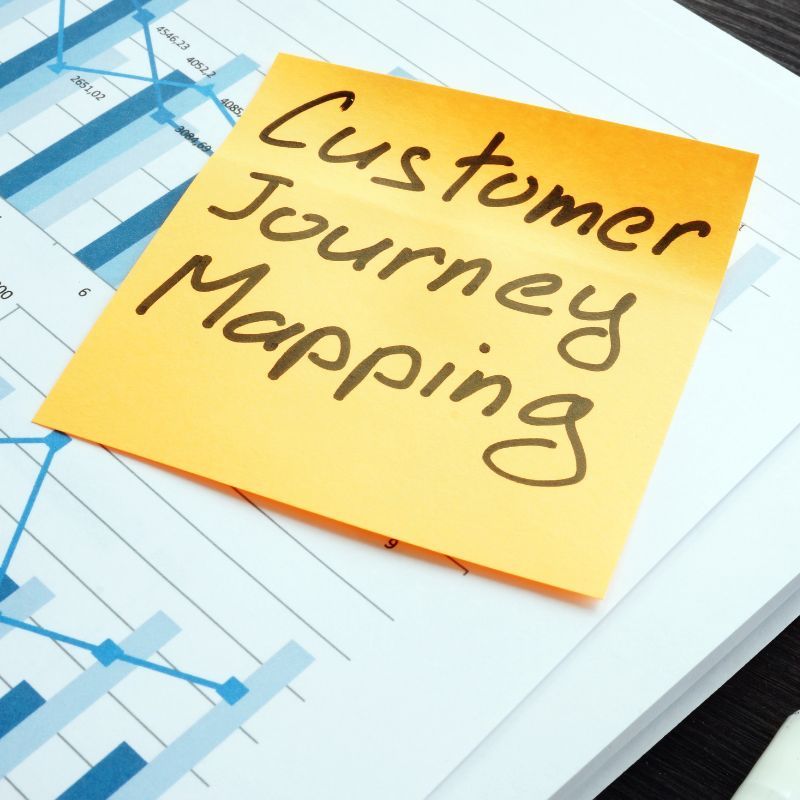
B2C Retail: The In-Store Shopping Journey
This journey map follows Maria, a 28-year-old shopper who prefers the in-store experience to find an outfit for an upcoming wedding. This journey is defined by physical touchpoints and real-time decisions, and the map reveals opportunities to create a more personalized and positive environment.
1. Awareness & Consideration (The Pre-Shopping Phase)
- Customer Actions: Maria sees a post from a favorite fashion brand on Instagram. She clicks the link, browses the new arrivals on her phone, and sees an in-store only exclusive. She decides to go to the physical store to try it on.
- Customer Thoughts & Feelings: “I need something special for the wedding. This brand has a great reputation. It’s a bit far, but I want to try it on to make sure the fit is perfect.” She feels excited and hopeful.
- Touchpoints: Social media (Instagram), mobile website, and the brand’s reputation.
- Pain Points: Initial hesitation about the time commitment to travel to the store.
2. The In-Store Experience (The Moment of Truth)
- Customer Actions: Maria arrives at the store and is greeted by a sales associate. She finds the outfit she saw online but also browses other options. She tries on several outfits in the fitting room.
- Customer Thoughts & Feelings: “The store is beautiful, and the music is great. This first dress is a bit tight; maybe I should try a larger size. The sales associate seems busy, but she’s friendly.” She feels a mix of excitement, frustration, and doubt.
- Touchpoints: The store’s exterior, interior design, music, fitting room, product displays, and the sales associate.
- Pain Points: The fitting room is a pain point. It’s a point of high emotional intensity where her confidence can be either boosted or crushed by the fit and feel of the clothing.
3. Purchase & Post-Purchase (The Afterglow)
- Customer Actions: Maria finds the perfect outfit and proceeds to the cashier. She is asked if she would like to sign up for the loyalty program. She says yes and provides her email.
- Customer Thoughts & Feelings: “I’m so glad I found this! The outfit is perfect. I hope the loyalty program gives me good deals.” She feels relieved, happy, and satisfied.
- Touchpoints: Cashier interaction, payment terminal, receipt, loyalty program sign-up form.
- Pain Points: The length of the checkout line or a complicated loyalty sign-up process could cause frustration.
4. The Loyalty & Advocacy Phase
- Customer Actions: Maria wears the outfit to the wedding and receives many compliments. She posts a picture of herself in the outfit on Instagram, tagging the brand. She receives a personalized email from the brand with a special discount code.
- Customer Thoughts & Feelings: “I feel great in this outfit! I’m so happy with this purchase. That was a nice surprise from the brand; I’ll definitely shop here again.” She feels proud and loyal.
- Touchpoints: The product itself, social media (Instagram), post-purchase email.
- Opportunities for Improvement: The personalized email and the positive social interaction are key opportunities to turn a one-time shopper into a brand advocate. The brand could offer a special reward for her post.
In Conclusion: Your Journey to Better CX
This in-store retail example highlights how a customer journey map reveals more than just a purchase. It exposes the emotional journey, the moments of truth, and the unseen friction points that can make or break an experience. By mapping out your own customer’s path, you can move beyond assumptions and make data-driven decisions to create a more seamless and enjoyable experience.
Ready to start mapping your own customer journey? Head over to our comprehensive guide on what is customer journey mapping to get started. You can also dive deeper into understanding the different stages by exploring our articles on mapping the path to purchase and crafting unforgettable moments of truth in the customer journey.